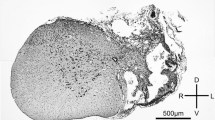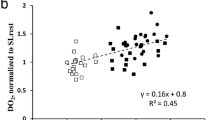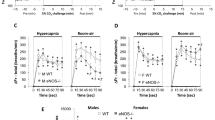Abstract
THE domestic fowl forms an eggshell of about 5 g in 20 h and during this process the oviduct derives about 3 g of carbonate ions from the blood stream. This results in a fall in both pH and bicarbonate content of the blood and a state of metabolic acidosis1. The bird partially compensates for this condition by hyperventilating, thereby lowering the carbon dioxide tension of its blood and reducing the fall in pH2. Obviously, this does not restore the bicarbonate content of the blood, and a number of attempts have recently been made to do this on the theory that the availability of this ion might be a limiting factor during shell secretion. The most common technique which has been used for this purpose is to allow the bird to breathe various concentrations of carbon dioxide during the time when it is forming the eggshell. Unfortunately, the results obtained from birds made hypercapnic in this way are contradictory, as some workers find an increase3 whereas others obtain a decrease in the thickness of the shells4. This has led to some discussion as to whether it is the pH or the bicarbonate content of the blood which affects the process of shell formation most.
This is a preview of subscription content, access via your institution
Access options
Subscribe to this journal
Receive 51 print issues and online access
$199.00 per year
only $3.90 per issue
Buy this article
- Purchase on Springer Link
- Instant access to full article PDF
Prices may be subject to local taxes which are calculated during checkout
Similar content being viewed by others
References
Mongin, P., and Lacassagne, L., C.R. Acad. Sci., Paris, 258, 3093 (1964).
Mongin, P., and Lacassagne, L., C.R. Acad. Sci., Paris, 261, 4228 (1965).
Frank, F. R., and Burger, R. E., Poultry Sci., 44, 1604 (1965).
Helbacka, N. V., Casterline, J. L., and Smith, C. J., Poultry Sci., 42, 1082 (1963).
Murray, C. D., and Hastings, A. B., J. Biol. Chem., 65, 265 (1925).
Banowski, R. A., Amer. J. Vet. Res., 3, 373 (1942).
Hunt, J. R., and Simkiss, K., Comp. Biochem. Physiol. (in the press).
Wolbach, R. A., Amer. J. Physiol., 181, 149 (1955).
Author information
Authors and Affiliations
Rights and permissions
About this article
Cite this article
SIMKISS, K. Acute Hypercapnia and Eggshell Formation. Nature 214, 84–86 (1967). https://doi.org/10.1038/214084a0
Received:
Revised:
Issue Date:
DOI: https://doi.org/10.1038/214084a0
This article is cited by
Comments
By submitting a comment you agree to abide by our Terms and Community Guidelines. If you find something abusive or that does not comply with our terms or guidelines please flag it as inappropriate.



